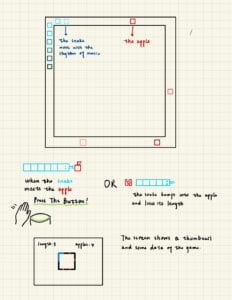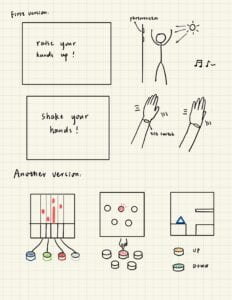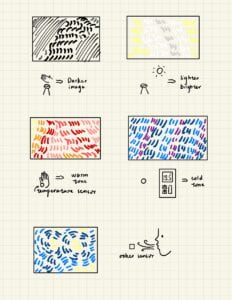1. The Snake
Genre: Game
Snake is a video game genre where the player maneuvers a line that grows bigger or longer after eating something, typically apples, making the snake a primary obstacle to itself. The player controls a dot, square, or object on a bordered plane. As it moves forward, it leaves a trail behind, resembling a moving snake. In some games, the end of the trail is in a fixed position, so the snake continually gets longer as it moves. (Wikipedia, https://en.wikipedia.org/wiki/Snake_(video_game_genre))
I want to simplify the map and add some music functions to this game. Using 4 NeoPixel strips to build a square frame where the snake (made of LED lights) can automatically travel through this frame. The snake moves with the pace of the music. There will be apples randomly appearing in the frame, represented as a blinking LED. Different from the original game, players should press the button when the snake comes across the apple as “eat the apple”, else, the snake will bump into the apple and lose its length. It’s a game that exercises the player’s reaction speed because the apple will appear randomly and unexpectedly, and players also have to press the button according to the rhythm of the music. These functions will make the game more interactive. The application of led adds a sense of technology to the whole game. I also want to use processing to make a thumbnail image which let the player see the location of the snake more clearly, and the screen can also display some data, such as the length of the snake, the number of apples, etc.

2. Rhythm Game
Genre: Game, Music
Rhythm game or challenges a player’s sense of rhythm. It focuses on dance or the simulated performance of musical instruments and requires players to press buttons in a sequence dictated on the screen. (Wikipedia, https://en.wikipedia.org/wiki/Rhythm_game)
I want to use some sensors to do a rhythm game that requires hand-arm movement, and the player makes the specified action according to the rhythm of the music and the prompt on the screen. For example, I can use a photoresistor to detect the player’s hand position, and arm position and use the tilt switch to input the movement data. When the game begins, there may be some instruction words appearing on the screen, players should move and make gestures with instructions and follow the rhythm. Or, I can just use some buttons, the player should timely and accurately press the button according to the instructions (for example, falling squares to catch, circle to point), and pressing with the pace of the music increase the engagement of players. Imagining a bit more, the game could be designed with two players competing with their speed of reaction and accuracy of the time of pressing buttons, which is more interactive.

3. The painting
After learning how to use a photoresistor to control the patterns presented in processing, I think maybe we can use temperature sensors and photoresistors as well as some other sensors to draw a unique image through the control of light, changing of temperature, and some other data.
For example, if my hand covers the photoresistor, then the image will be darker, and if I move my hand, the image will be lighter. Also, if I put my hand closer to the temperature sensor, the image will add some red and orange color as a “warm” feeling, otherwise, it will show in a cold tone. With the distance between the sensor and users changing, the image will become either vague or clear. If there are sensors that can detect other things like the wind and the humidity, and forms a simulation through processing to control the movement of the image (for example, the image moves and shakes because of the wind, some blue points appear in the image as raindrops when the humidity is high), the work will be more interactive.
